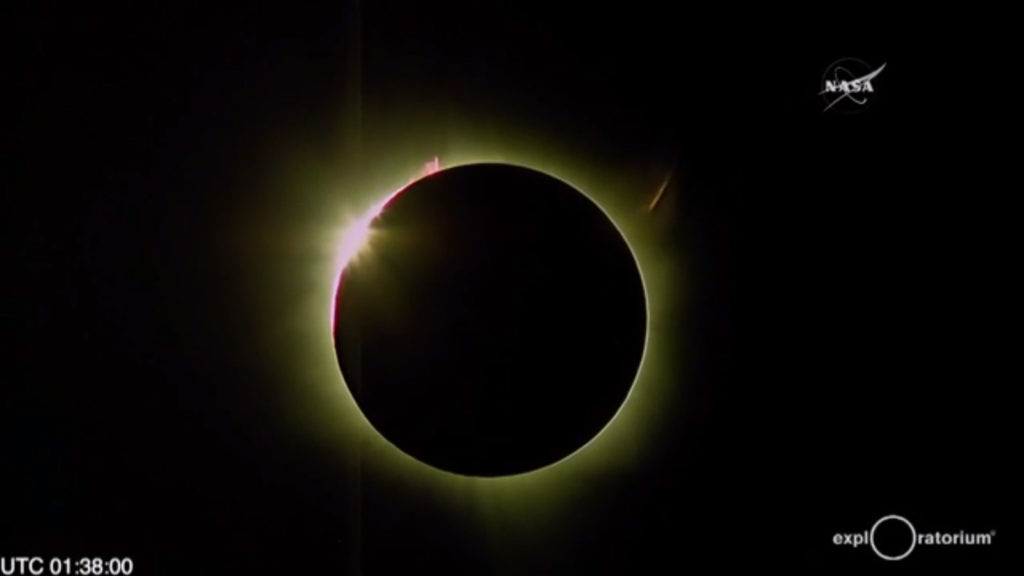
Image Credit: NASA tv
Looking for information about the 2024 Total Solar Eclipse?
See the event website at eclipseovertexas2024.com
The Lowell Observatory Solar Eclipse Experience
August 20-22, 2017
Email: lowelleclipse@lowell.edu
To celebrate the 2017 Total Solar Eclipse, Lowell Observatory astronomers and educators are traveling to Madras, Oregon. Starting on Sunday the 20th and continuing through the evening of the 22nd, we will give programs, present hands-on activities, hold star parties and, of course, view the entire solar eclipse, from the first moment the moon covers the Sun, through totality, and until the moon finally moves off the Sun.
Madras High School will serve as our venue, with both daytime and evening celestial viewing taking place at the football field and programs presented inside the adjacent Madras Performing Arts Center.
BACKGROUND
This has been dubbed the Great American Eclipse of 2017 because the United States has exclusive access to it. The path of totality, which reaches a maximum width of 71 miles, stretches in a southeasterly route from the Pacific northwest to the middle of the Atlantic coastal plain, passing over 14 states. We chose Madras as the site for our event because it is statistically one of the places most likely to have clear skies on August 21.
Total solar eclipses happen about every 18 months but cross the same precise spot on Earth an average of only once every 375 years. The last one visible from anywhere in the United States was on July 11, 1991, when Hawaiian observers saw this phenomenon of the Moon passing directly in front of the Sun. Not since February 26, 1979 has a total solar eclipse been visible from the continental United States. The last one to stretch across the entire country, from the Pacific to Atlantic oceans, was on June 8, 1918.
Partial eclipses are fascinating, but the experience of totality can be life-altering. Observers witness strikingly cooler temperatures, eerie darkness, the sudden appearance of stars and planets, and the unusual behavior of animals thinking night has fallen (crickets chirping, for instance). Several features of the Sun also make cameo appearances, including the Sun’s outer atmosphere (corona) and bizarre eclipse phenomena such as the “Diamond Ring” and “Baily’s beads”.
Total solar eclipses are also scientifically noteworthy, as astronomers have gleaned a great deal of information by observing them. Some of the more celebrated results include a 2nd century BC estimate of the distance between the Sun and Earth, the discovery of the element helium in 1868, and the apparent confirmation of Einstein’s general theory of relativity in 1919.
If you miss this one, the next total solar eclipse visible from the United States will not be until 2024, and the next one to span the continent—like the upcoming Great American Eclipse of 2017—won’t occur until 2045.